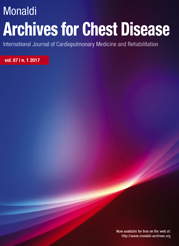Approach to mechanical ventilation: a simplified approach for a pulmonologist
All claims expressed in this article are solely those of the authors and do not necessarily represent those of their affiliated organizations, or those of the publisher, the editors and the reviewers. Any product that may be evaluated in this article or claim that may be made by its manufacturer is not guaranteed or endorsed by the publisher.
Accepted: 10 April 2025
Authors
Mechanical ventilation is a critical intervention for patients with respiratory failure, providing essential support for oxygenation and ventilation while reducing the work of breathing. It operates through key breath-phase variables: triggering (breath initiation), targeting (flow or pressure delivery), and cycling (ending inspiration). Various ventilation modes, including invasive and non-invasive methods, are tailored to patient needs. Non-invasive ventilation and high-flow nasal cannula are first-line options in acute respiratory distress, whereas invasive mechanical ventilation is necessary for severe cases. Optimal ventilatory strategies aim to prevent complications such as barotrauma, volutrauma, and dynamic hyperinflation by carefully adjusting parameters like tidal volume, respiratory rate, and positive end-expiratory pressure. One major challenge in mechanical ventilation is patient-ventilator dyssynchrony, where the patient’s respiratory efforts do not align with the ventilator’s cycles, leading to increased work of breathing and discomfort. Dyssynchrony can occur during the trigger, target, or cycle phases, requiring waveform analysis and ventilator adjustments to optimize synchrony. Weaning from mechanical ventilation follows a structured process involving readiness assessment, spontaneous breathing trials, and extubation. Successful weaning depends on maintaining stable respiratory function, with close monitoring to prevent post-extubation failure. Identifying and managing ventilatory complications, optimizing patient comfort, and ensuring an individualized approach to ventilator management are key to improving patient outcomes. This review provides a comprehensive understanding of mechanical ventilation, its principles, common challenges, and weaning strategies to guide effective clinical decision-making.
How to Cite

This work is licensed under a Creative Commons Attribution-NonCommercial 4.0 International License.






